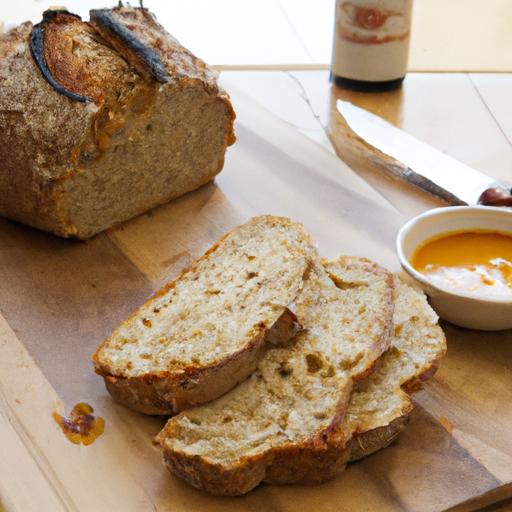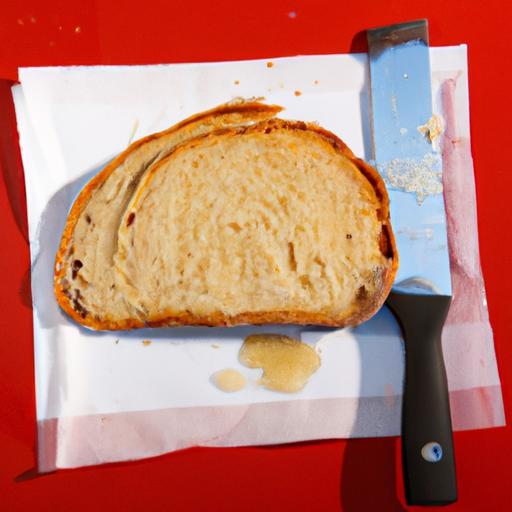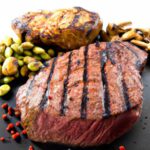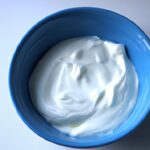In the quiet alchemy of baking, few creations capture the imagination quite like sourdough. This ancient, bubbling starter-part science, part artistry-holds the power to transform simple flour and water into a living, breathing foundation for bread that sings with depth and character. Welcome to “Crafting Magic: Your Ultimate Guide to Sourdough Starter,” where we unravel the mystery behind this fermented marvel. Whether you’re a curious novice or a seasoned baker seeking to refine your craft, join us as we delve into the art and science of nurturing your own wild yeast culture. Prepare to awaken a timeless tradition in your kitchen, and discover how a humble jar of starter can unlock the door to endless delicious possibilities.
Crafting Magic: Your Ultimate Guide to Sourdough Starter
Crafting Magic: Your Ultimate Guide to Sourdough Starter unlocks the fascinating science behind cultivating a vibrant and fragrant sourdough starter-a living culture that breathes life into every loaf you bake. As you embark on this culinary adventure, imagine a bubbling jar of wild yeast and lactic acid bacteria growing stronger each day, producing that perfect tang and crumb you crave. This guide will illuminate the secrets of choosing ideal flour and water, nurturing your starter with love and precision, and troubleshooting hurdles that might appear along the way, all while enhancing the depth and complexity of your flavor profiles.
Prep and Cook Time
- Active Prep Time: 10 minutes daily
- Fermentation Time: 5-7 days for full maturity
- Total Time: About 1 week (including feeding cycles)
Yield
Enough sourdough starter to bake 2-3 loaves of bread, approximately 1¼ cups (300g) mature starter.
Difficulty Level
Easy to Medium – Perfect for both curious beginners and seasoned artisans wanting to deepen their craft.
Ingredients
- 1 cup (120g) whole wheat flour, freshly milled if possible
- 1 cup (120g) unbleached all-purpose flour, sifted
- ¾ cup (180ml) filtered or spring water, room temperature (38-70°F / 3-21°C)
Instructions
- Mix the flours: Combine the whole wheat and all-purpose flour in a large, clear glass jar. Stir for even distribution of nutrients.
- Add water: Pour in the filtered water gradually while stirring until you create a thick, uniform batter about the consistency of pancake batter. The hydration level is crucial-it allows wild yeasts and bacteria to flourish effectively.
- Cover and rest: Loosely cover the jar with cheesecloth or a breathable lid to allow air exchange. Keep the starter at a stable room temperature (70-75°F/21-24°C) away from direct sunlight. Warmth fosters fermentation activity without overheating.
- Feed daily: Each morning, discard half of your starter to maintain balance and add ½ cup (60g) sifted all-purpose flour and ½ cup (120ml) filtered water. Mix thoroughly until smooth. This “feeding” replaces nutrients and prevents overcrowding.
- Watch the magic bubble: Within 3-5 days, your starter will show bubbles-signs of fermentation and rising activity. A mild tangy smell, resembling yogurt or mild vinegar, signals healthy progress.
- Test for readiness: To check if your starter is ripe, drop a teaspoon into a glass of room-temperature water; if it floats, it’s actively aerated and ready to bake with.
- Store smart: Once mature, maintain your starter with weekly feedings stored in the fridge, feeding 1:1 flour and water amounts after discarding half. Bring to room temperature before baking for best results.
Chef’s Notes: Tips for Success and Flavor Enhancement
- Choosing Flour: Whole grains introduce wild yeast and minerals critical to a robust starter. Experiment with rye or spelt for differences in flavor intensity and rise.
- Water Quality: Chlorinated or heavily treated water inhibits fermentation. Use filtered or bottled water to keep microbes thriving.
- Temperature Control: Warm environments speed growth, but too hot (>85°F) can kill cultures. A steady, moderate climate is your starter’s best friend.
- Common Issues: A gray liquid (“hooch”) indicates hunger-discard it and feed immediately. A pink or orange hue signals contamination; discard and restart to avoid spoilage.
- Flavor Variation: Longer fermentation and less frequent feedings develop tangier, more complex profiles. Incorporate a pinch of rye flour for a subtle earthy background.
- Scaling Up: Scale feeding ratios to maintain ample starter for your baking schedule without waste.
Serving Suggestions
Once your starter is thriving, it’s ready to inspire countless rustic breads from classic country loaves to airy baguettes. For presentation, serve your bread with artisanal butter, a drizzle of honey, or a sprinkle of flaky sea salt. Garnish sourdough toast with fresh herbs, ripe tomatoes, or creamy avocado for a vibrant meal or snack. Keep a small jar of your starter visibly bubbling on your countertop as an inspiring centerpiece in your kitchen-a testament to the magic cultivated by patience and care.

| Nutrient | Per 100g Starter |
|---|---|
| Calories | 150 kcal |
| Protein | 5g |
| Carbohydrates | 30g |
| Fat | 1g |
For more on how fermentation can elevate your baking skills, visit King Arthur Baking’s sourdough starter guide. Also, explore our internal article on fermentation to deepen your culinary knowledge and achieve perfect crust and crumb every time.
Q&A
Q&A: Crafting Magic – Your Ultimate Guide to Sourdough Starter
Q1: What exactly is a sourdough starter, and why is it often called “magic”?
A1: A sourdough starter is a living mixture of flour and water teeming with natural wild yeasts and beneficial bacteria. It’s often dubbed “magic” because this humble blend transforms basic ingredients into beautifully risen, flavorful bread without commercial yeast-creating edible alchemy right in your kitchen.
Q2: How do I begin crafting my own sourdough starter?
A2: Start with equal parts of whole-grain flour and filtered water in a clean jar. Stir them lovingly, cover loosely to breathe, and leave at room temperature. Feed your starter daily by discarding half and adding fresh flour and water. This ritual invites wild yeasts to awaken, grow, and flourish within a week or so.
Q3: What’s the science behind the bubbling and rising of a sourdough starter?
A3: The bubbles are a sign of life! Wild yeasts consume the sugars in the flour, producing carbon dioxide-the tiny gas bubbles that puff up the starter. Meanwhile, friendly bacteria generate acids, giving sourdough its signature tangy flavor. This dynamic fermentation creates the perfect environment for bread to rise.
Q4: How do I know when my starter is ready for baking?
A4: A ripe starter is bubbly, active, and smells pleasantly tangy or fruity. When you feed it, it should double in size within 4-6 hours. A simple “float test” can help: drop a spoonful in water-if it floats, it’s alive and ready to energize your dough!
Q5: Can I personalize my sourdough starter’s flavor?
A5: Absolutely! Try different flours-rye, spelt, or whole wheat enrich flavor and fermentation. Adjust hydration levels or feeding schedules to influence tanginess and aroma. Like any magic spell, small tweaks can create wondrous variations unique to your kitchen.
Q6: How do I care for my starter long-term?
A6: Consistency is key. Regular feedings keep your microbial friends thriving. If baking less often, refrigerate and feed weekly. Before baking, revive with room-temperature feedings to reawaken the starter’s vigor-a commitment to nurture your living legacy.
Q7: What if my starter develops an unusual smell or color?
A7: Not all surprises are welcome. A healthy starter exudes a vinegary or fruity scent. If it smells moldy, rotten, or shows pink or orange tints, discard it-these are signs of contamination. Remember, even magic needs care and respect to flourish.
Q8: Can children or beginners successfully create a sourdough starter?
A8: Yes! Sourdough starter-making is a perfect hands-on lesson in patience, observation, and chemistry. With guidance, beginners and kids alike can witness the magic unfold and take pride in cultivating a piece of living history.
With curiosity and a pinch of patience, your sourdough journey begins-a ritual as old as time, turning simple flour and water into a bubbling cauldron of bread-making enchantment. Happy baking!
Closing Remarks
As your journey into the world of sourdough starter comes to a close, remember that crafting this living, breathing culture is both a science and an art. With patience, practice, and a touch of magic, you’ll transform simple ingredients into a bubbling symphony of flavor and life. So nurture your starter like a cherished companion, and let it be the foundation of countless loaves that fill your kitchen with warmth and wonder. Happy baking-may your sourdough adventures rise to every occasion!


